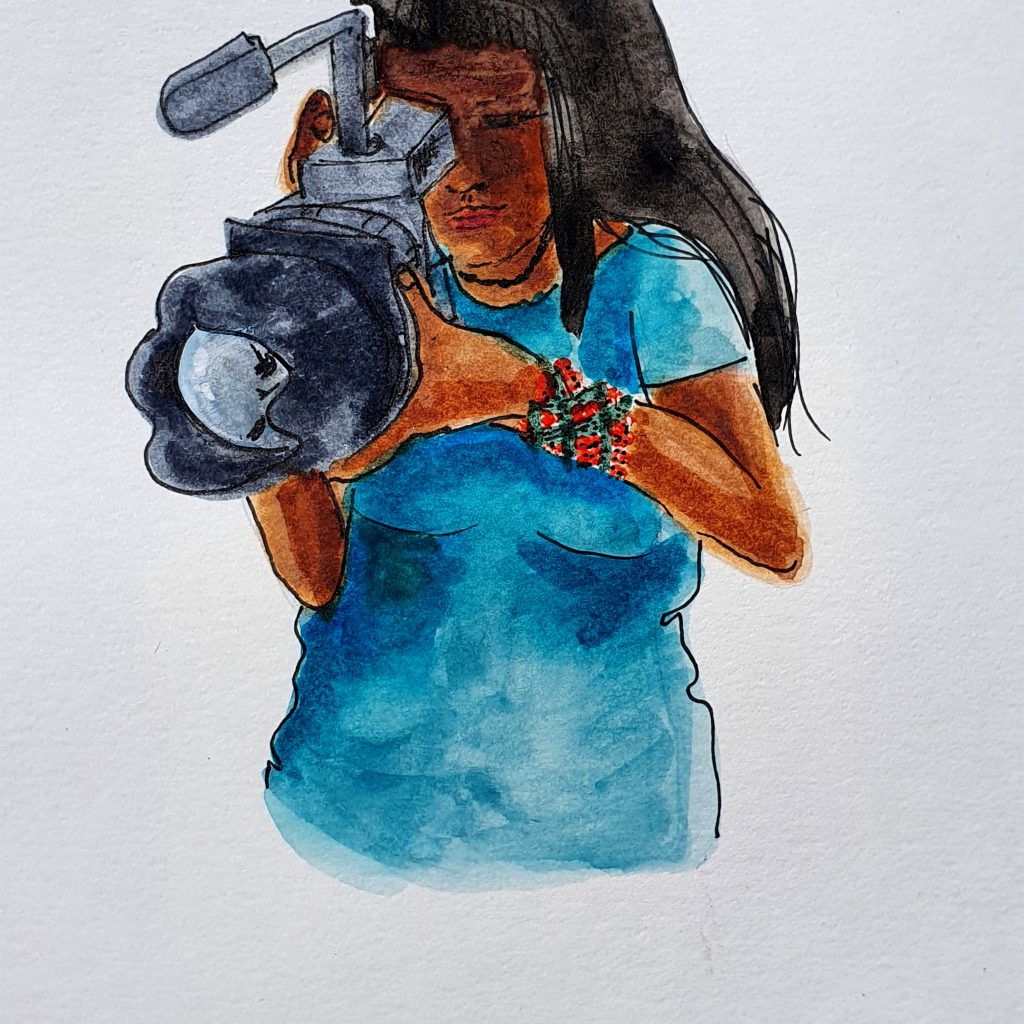By Sandra Damiani (Sapopema Comunicação Socioambiental)

Motor boats travel for hours and hours on the Paraguai and Içana rivers carrying Michely Kaiowá and Francineia Bitencourt Fontes, from the Baniwa people. Geographically separated by thousands of kilometers, one in the Pantanal wetlands in the state of Mato Grosso do Sul, and the other in the Amazon in the state of Amazonas, they had a long journey and faced some obstacles to go to far-off lands to portray the reality of indigenous peoples on video. These two women are part of a group of fourteen filmmakers from different ethnicities who recorded 15 audiovisual pieces covering all biomes from north to south of Brazil.
The audiovisuals were part of the Indigenous Lands Project by GIZ Brazil, and were produced under a partnership with the National Indigenous Peoples Foundation (FUNAI). To this end, it supported indigenous filmmakers with equipment and a grant, in addition to an on-line training and mentoring program throughout the process, which was conducted by Associação Filmes de Quintal.
The indigenous people show in video their view of life in the villages with regard to food and territorial security, culture, health, and other aspects. The goal was to provide a local illustration of how indigenous people experience the themes in the National Policy on Territorial and Environmental Management of Indigenous Lands (PNGATI), the most important national public policy designed to safeguard the rights of these peoples and the sustainability of their lands. The audiovisual educational materials will illustrate the on-line training course on PNGATI, which was designed as part of the project for the training of FUNAI officials and other audiences working with indigenous peoples in Brazil.
A long journey to show life on indigenous lands
Michely Kaiowá rode a boat for six hours to reach Ínsua Island, where he stayed for seven days to collect inputs on the Guató ethnic group, the last canoeing peoples in the Pantanal wetlands. To her, the most striking aspect was the difficult access to food. “They have nothing to eat, just fish and game when they catch them. “They receive a staple food basket once every three months,” she reports, and she explains that the crops were damaged by the severe drought and dry spell. Many areas were also affected by the major fires that occurred in the Pantanal wetlands. There are 419 indigenous people living in the Guató Indigenous Land, who also reported difficulties in taking their handicrafts outside the island to sell them.
The filmmaker also produced an additional film about traditional Guarani Kaiowá medicine in which she showed herbs, songs and dances used by her people in healing rituals. the Panambizinho Indigenous Land is located in Dourados, in the state of Mato Grosso do Sul, and it is home to 414 people and covers 1,000 hectares. “I went to the swamp to show how we reach the medicine,” says Michely Kaiowá, who received his first new 4K camera as part of the project.
Fran Baniwa – as she likes to be called – traveled for eight hours by boat under rain and sun to reach the Assunção village in the Rio Negro Indigenous Land, in São Gabriel da Cachoeira – the most indigenous town in Brazil –, which lies near the border with Colombia and Venezuela. The first idea in the script was to look into income generation with the pepper houses in the production of a mix of special peppers, but this was not possible due to the high cost of travel.
The pandemic was also a hindrance to Fran Baniwa and the other cameramen who visited other indigenous lands. During the shooting sessions, many leaders of this and other peoples died from Covid-19. So she decided to focus on the art of Baniwa basketry.
All stages of basketry were documented: the collection of inputs in the forest and the production of arumã fibers, which is a plant that grows in half-flooded areas; fiber preparation; pigmentation; and weaving. The meaning of various graphic representations in the art of Baniwa basketry was featured. “It was a learning process for both the young people and the people who are going to watch the documentary because I managed to interview the wisest people, who are artisans and experts in this art. We would form a circle and the wise people would start talking and everyone was learning. It was a moment of exchange,” says Fran Baniwa, who received equipment as part of the project.
“Today, I am fully equipped to carry on and improve my work. I have a powerful instrument to record and to continue producing videos. I benefited a lot from this project, in addition to receiving recognition, growing stronger as an indigenous woman and elevating my work as a filmmaker,” she says.
Project: Protection and Sustainable Management in Indigenous Areas of the Amazon
Partner: National Indigenous Peoples Foundation (FUNAI)
Commissioned by: Federal Ministry for Economic Cooperation and Development (BMZ in German)